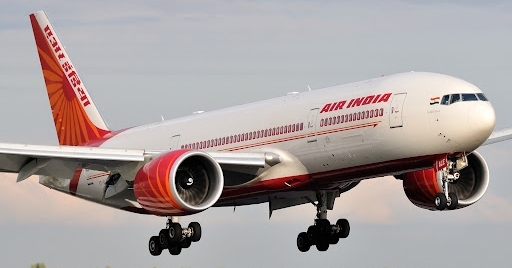Tata to take over Air India again after 68 years
Tata Sons is set to take over Air India again, more than half a century after the country’s biggest conglomerate ceded control to the state, ending the government’s hold over the airline as it emerged as the successful bidder.

October 1, 2021: Tata Sons is set to take over Air India again, more than half a century after the country’s biggest conglomerate ceded control to the state, ending the government’s hold over the airline as it emerged as the successful bidder.
“A panel of ministers accepted a proposal from bureaucrats, who recommended the conglomerate’s bid ahead of an offer from entrepreneur Ajay Singh, according to people with knowledge of the matter,” reports Bloomberg Quint.
An official announcement is expected in the coming days.
It also puts an end to a decades-long struggle to offload the money-losing flag carrier. For Tata Sons, the holding company for the salt-to-software empire and owner of British luxury carmaker Jaguar Land Rover, the recommendation means it’s coming back to an asset it started almost 90 years ago.
Meanwhile, the Twitter handle of the secretary to the Department of Investment and Public Asset Management under the ministry of finance noted that “Media reports indicating approval of financial bids by the government of India in the AI disinvestment case are incorrect. Media will be informed of the government decision as and when it is taken.”
According to the Directorate General of Civil Aviation (DGCA), Air India carried 28,917 tonnes of scheduled domestic cargo, 20,930 tonnes of scheduled international cargo, 1,740 tonnes of non-scheduled domestic cargo and 10,906 tonnes of non-scheduled international cargo in the first half of 2021 (January to June). The total cargo tonne-kilometre performance of the airline was 1.2 billion for the same period. Air India was also instrumental in moving Covid-19 pandemic relief commodities, including the oxygen concentrators, throughout the country during the crisis.
The Air India website says that the airline has a total fleet of 172 aircraft, including 49 widebody and 123 narrowbody, across Air India Express and Alliance Air.
Established by legendary industrialist and philanthropist J.R.D. Tata, who was India’s first licensed pilot, the airline originally flew mail in the 1930s between Karachi in then-undivided, British-ruled India and Bombay, now known as Mumbai. It turned commercial and went public in the 1940s.
After Air India merged with state-owned domestic operator Indian Airlines in 2007, losses started to mount. In 2017, the government approved that route and a committee was set up to start the process. IndiGo, the only airline to have publicly shown interest in buying parts of the carrier, dropped out of the reckoning in 2018, saying it didn’t have the wherewithal to acquire Air India in its entirety and make it profitable. The government had to sweeten the deal by allowing suitors to decide how much of the carrier’s debt they wanted to take on.
For Tata Group, Air India adds a third airline brand to its stable, considering the conglomerate already holds a majority interest in AirAsia India and Vistara, a joint venture with Singapore Airlines.
Air India is now saddled with a debt of around 600 billion rupees ($8.1 billion) but has some attractive assets, including prized landing and parking slots at London’s Heathrow airport, which may help Vistara lure business travellers with direct flights to Europe.
“The purchase, once it goes through, will be a test of the group’s aviation acumen. Tata Group has faced criticism for not running its existing aviation businesses efficiently, even though they represent a tiny portion of overall revenue. Cyrus Mistry, who succeeded Ratan Tata as chairman of the conglomerate but was later ousted in India’s most high-profile boardroom coup, raised the alarm in an October 2016 letter, saying he pushed backed against both airline ventures,” the report said.



